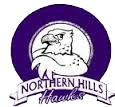Journey of a School - Northern Hills Elementary
Onalaska School District
Journey of a School | Journey of a District | Journey of an Educator
Northern Hills Elementary is one of three elementary schools in the School District of Onalaska. It is a title one school with forty-eight percent of its students receiving free or reduced lunch. Over ten percent of the student population at Northern Hills are English learners. For several years the administrator and the teachers have worked diligently to implement the Response to Intervention or RtI system. In the fall of 2011 Northern Hills became a demonstration site partnering with the RtI Center of Wisconsin to further their progress in becoming an RtI proficient school. Jill Koenitzer, the regional coordinator from the RtI Center started this journey by having the staff take the School-Wide Implementation Review or SIR. Through this diagnostic tool, culturally responsive practices was shown to be an area that was in need of significant improvement.
Specific questions that led to this finding were:
Northern Hills elementary school children in the onalaska school district
Do we...
- provide universal curriculum and instruction that uses the cultural beliefs, practices and experiences of our students?
- provide interventions relevant to the cultural beliefs, practices, and experiences of our students not meeting benchmarks? exceeding benchmarks?
- use a process to analyze disaggregated universal screening results?
- demonstrate cultural competence when collaborating in grade level/content area teams? in our building level problem-solving teams?
As a part of the Northern Hills culturally responsive journey staff members took it upon themselves to learn and grow in this field. The first experience that helped them to find a better understanding of culturally responsive practices was the Beyond Diversity I training in Madison, Wisconsin. At this time the event was put on by CREATE. Prior to attending the training, participants were assigned the book, Courageous Conversations about Race by Glen E Singleton and Curtis Linton. The two-day conference was attended by a small group of staff members from Northern Hills. During these two days, participants deepened their knowledge through various activities. Afterwards, these teachers created a weekly forum at Northern Hills Elementary for all staff to talk specifically about diversity related issues. This weekly dialogue lasted the entire school year.
The focus on culturally responsive practices also prompted the school to develop a series of all-staff meetings on culturally responsive practices. Staff members participated in activities that allowed them to learn more about their own culture, beliefs, and even biases. During the 2012-2013 school year, several Northern Hills staff volunteered their time and talent to an after school program for English learners. For many participants this experience deepened their understanding of Hmong speaking students and their home lives.
The following year, several staff members continued to grow with the guidance of Andreal Davis, Culturally Responsive Coordinator for the RtI Center, and Michelle Belnavis, Culturally Responsive Technical Assistance Coordinator for the RtI Center. They offered the School District of Onalaska a plethora of events for staff to learn and grow in their journey. Staff members were able to demonstrate their knowledge in the Spring of 2014 with a family reading night with a cultural focus. Every student was invited to participate in a cultural mapping activity, as well as attend stations of various ethnic backgrounds that were represented in the student population.
All of these experiences brought the staff to a better understanding of what it meant to be a culturally responsive educator. In the Spring of 2013, staff members of Northern Hills took the School-Wide Implementation Review for the second time. When evaluating the culturally responsive-based questions again, staff were able to answer these questions with a new lens because of their experiences. Not only did staff members learn about their student's cultural beliefs, practices, and experiences, they had a better understanding of their own culture. These new deepened understandings of self and students aided them in demonstrating cultural competence in collaboration with staff and in their classrooms. This change resulted in a culturally responsive level of “not in place” in the fall of 2011, and grew past the purpose building stage and into the “infrastructure” stage by the spring of 2015 on the SIR.
Resources:

